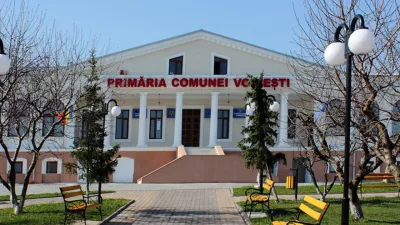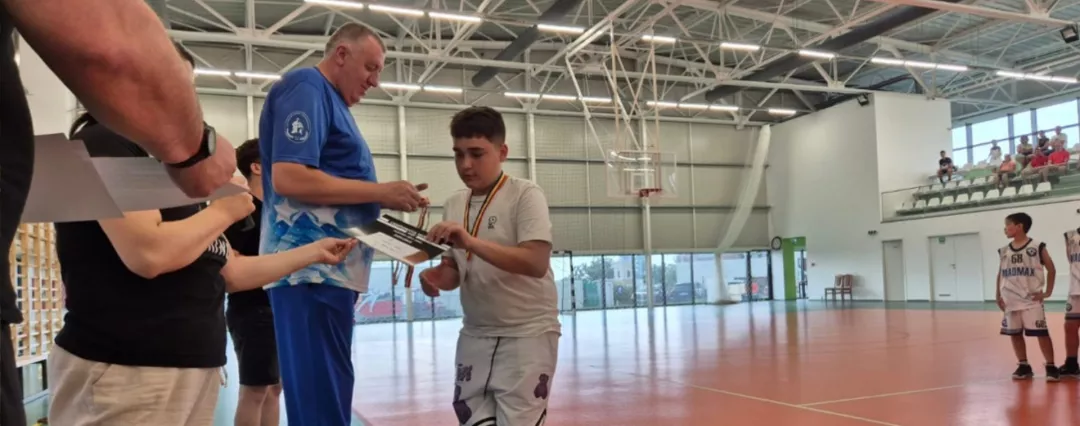General information
RDP Priority
- P6. Social inclusion and local development
RDP Focus Area
- 6B: Local development
RDP Measure
- M19: LEADER/CLLD
Beneficiary type
- Local / regional authority
Summary
The Voinesti commune, in Iași County, Romania, consists of five villages. One of these, Slobozia, is home to a large Roma community. LEADER funds were used to turn a 10 000 m2 plot of land into a sports field with social inclusion goals aimed at leaving no one behind in rural development.
Results
- The new sports infrastructure has increased the village population’s access to educational sports programmes, leading to greater social inclusion and improved quality of life.

Promoter
Voinesti Town Hall
Funding
Total budget: 30 358 (EUR)
EAFRD: 24 286 (EUR)
National/Regional: 6 072 (EUR)
Resources
Documents
Good Practice Report - Development of a sports field for the integration and social inclusion of the Roma community
(PDF – 1.08 MB)
Context
Voinesti commune is located 17 km from the Iasi Municipality and has five villages. One of these, Slobozia, has a majority Roma population. In 2018-2022, national funds were used to expand and modernise the local secondary school to support and encourage the enrolment and graduation of children from Slobozia village. Alongside this effort, the local administration took advantage of existing opportunities to access two sports investment projects in 2018-2022. These promote social inclusion, diversity and local development at the commune level. They were the 'Development of the Voinesti Commune Sports Field for the Integration and Social Inclusion of the Roma Population' project (financed through the EAFRD) and the 'Voinești Sports Hall' project, which was financed through national funds.
The development of sports fields through the LEADER measure was carried out in several counties across Romania during the 2014-2020 period because sports facilities from the communist period were either damaged or completely missing from rural areas. In general, the projects financed the creation of sports areas for basketball, handball, volleyball, mini-football or tennis. This also included the construction of the necessary spaces for the administration and changing rooms - showers, toilets, etc.
Objectives
The aim of the project was primarily to support the inclusion and integration of the Slobozia village Roma community members by investing in social infrastructure that brings people together around education, culture and, in this case, sports facilities.
Activities
Defining and developing the project plan included technical documentation needed to obtain the necessary approvals, agreements, and authorisations; project specifications and implementation details; and assistance requirements during the execution of the works.
Planning for and constructing the sports field involved uncovering the vegetal layer; compacting the ballast layer; casting a reinforced concrete layer; planting lawn; installing terraces; purchasing and installing soccer goals, basketball hoops, tennis and volleyball nets and protective nets; creating a perimeter lighting system with photovoltaic panels placed on metal poles and lamps with low energy consumption; creating a path for pedestrians (including for people with disabilities); and installing metal mesh fencing provided with gates for entry/exit access.
Main results
- The new sports infrastructure has increased access to European-standard educational sports facilities and programmes for all residents, improving social inclusion and quality of life.
- In particular, the new facilities have increased the number of Roma residents of the Colinele Iasului LAG territory who benefit from improved services.
Key lessons
- LEADER’s ability to provide such community facilities can help improve younger generations’ affiliation with their home villages and the future of their rural areas.
- Through the contribution of the CAP financial support, the efforts of the mayor’s office, and the support of the Colinele Iasiului LAG, the investments in the new sports equipment have provided a catalyst for the greater participation of young people and improved social cohesion across the Voinesti community as a whole.
- Investing community time in building civic skills and capacity for applying to (and managing) EU-funded projects creates long-term community benefits.
- Spending time to understand a LAG’s administrative system will help project managers plan and absorb funding opportunities efficiently.
Roma culture and traditions are a rich and diverse part of the world's cultural heritage. From their passionate music and vibrant dances to their strong values of family and community, they continue to fascinate. Also, throughout history, they have been subject to discrimination and marginalisation. Stereotypes and prejudice against them often led to social and economic exclusion. Even today, many Roma face obstacles to access to education, housing, and jobs due to discrimination and stigma.
